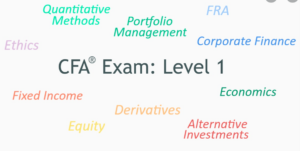The CFA Institute, renowned globally for its prestigious Chartered Financial Analyst (CFA) program, has played a significant role in shaping the finance industry and elevating…
The Chartered Financial Analyst (CFA) Level 1 exam is a rigorous and globally recognized qualification that opens doors to a rewarding career in the finance…
Introduction: Financial statements are the bedrock of understanding a company’s financial health and performance. They provide a snapshot of a company’s financial position, profitability, and…
SPAC_EduInvest-1 Courtesy : CBInsights & NASDAQ
Consumer Spending on Education – India ranks the highest across developed as well as emerging economies: The Sheer Size of the Total Addressable Market for…
Remember the Ship which had blocked the Suez Canal & for a weeks time the complete Trade between Europe and Asia was blocked which used…


